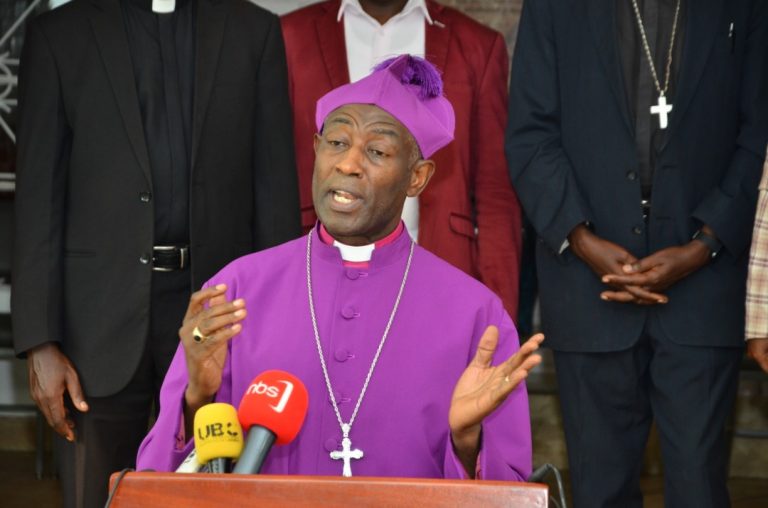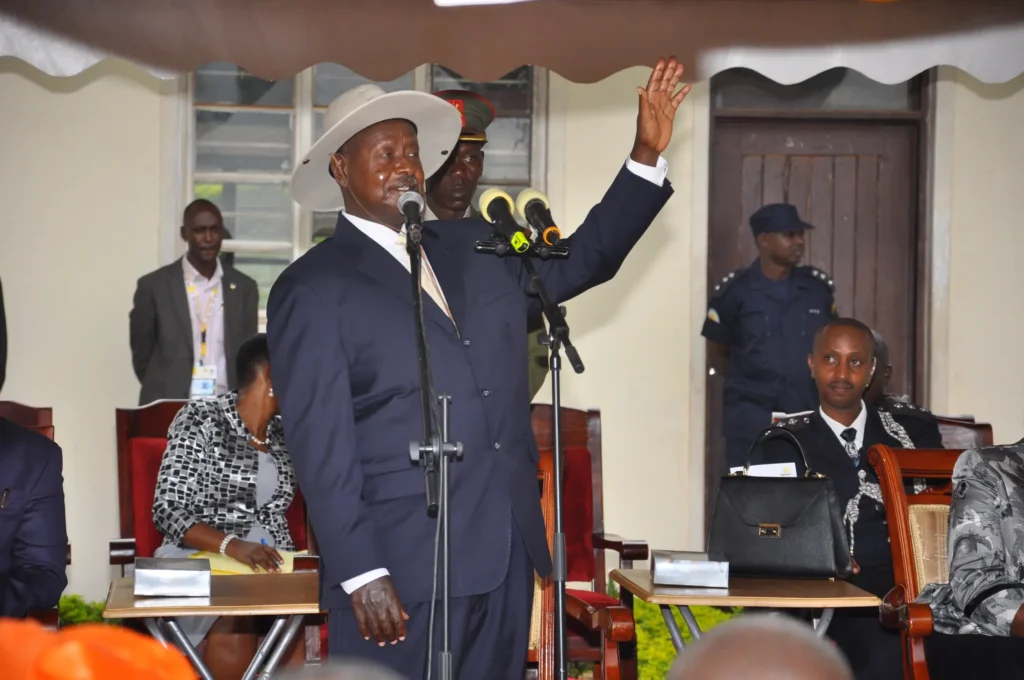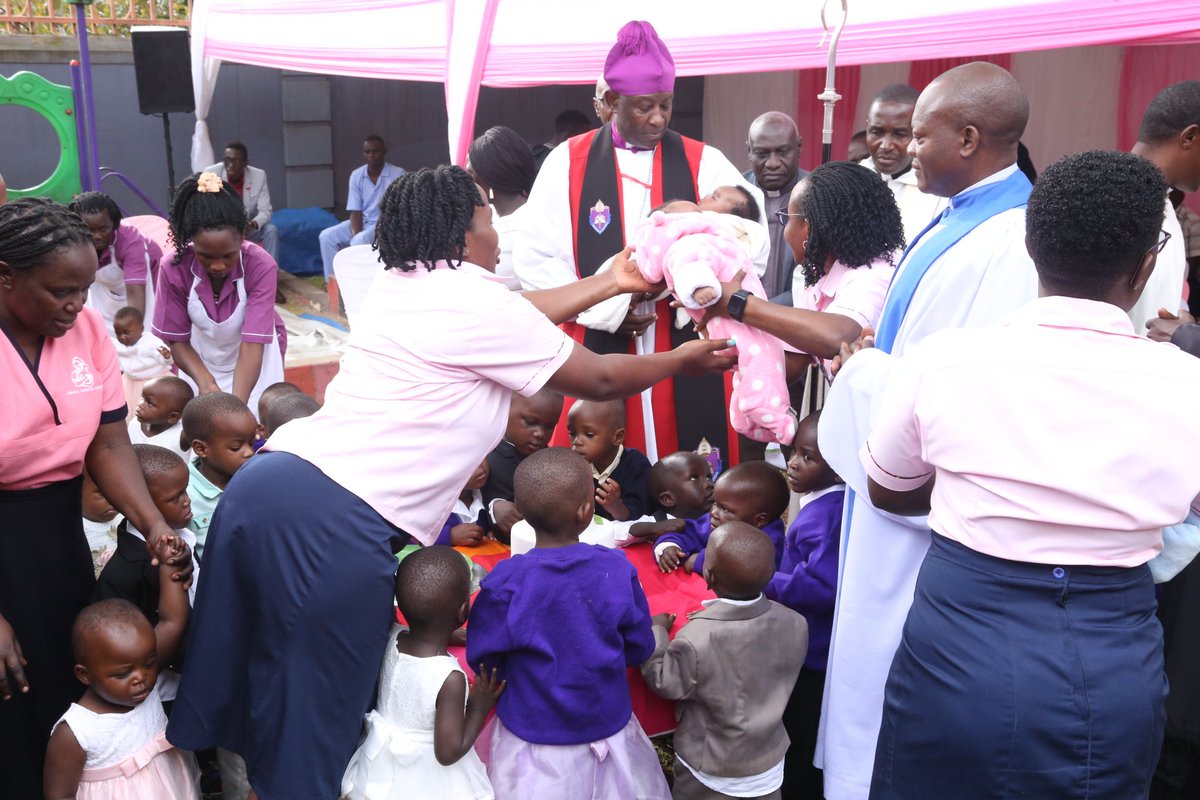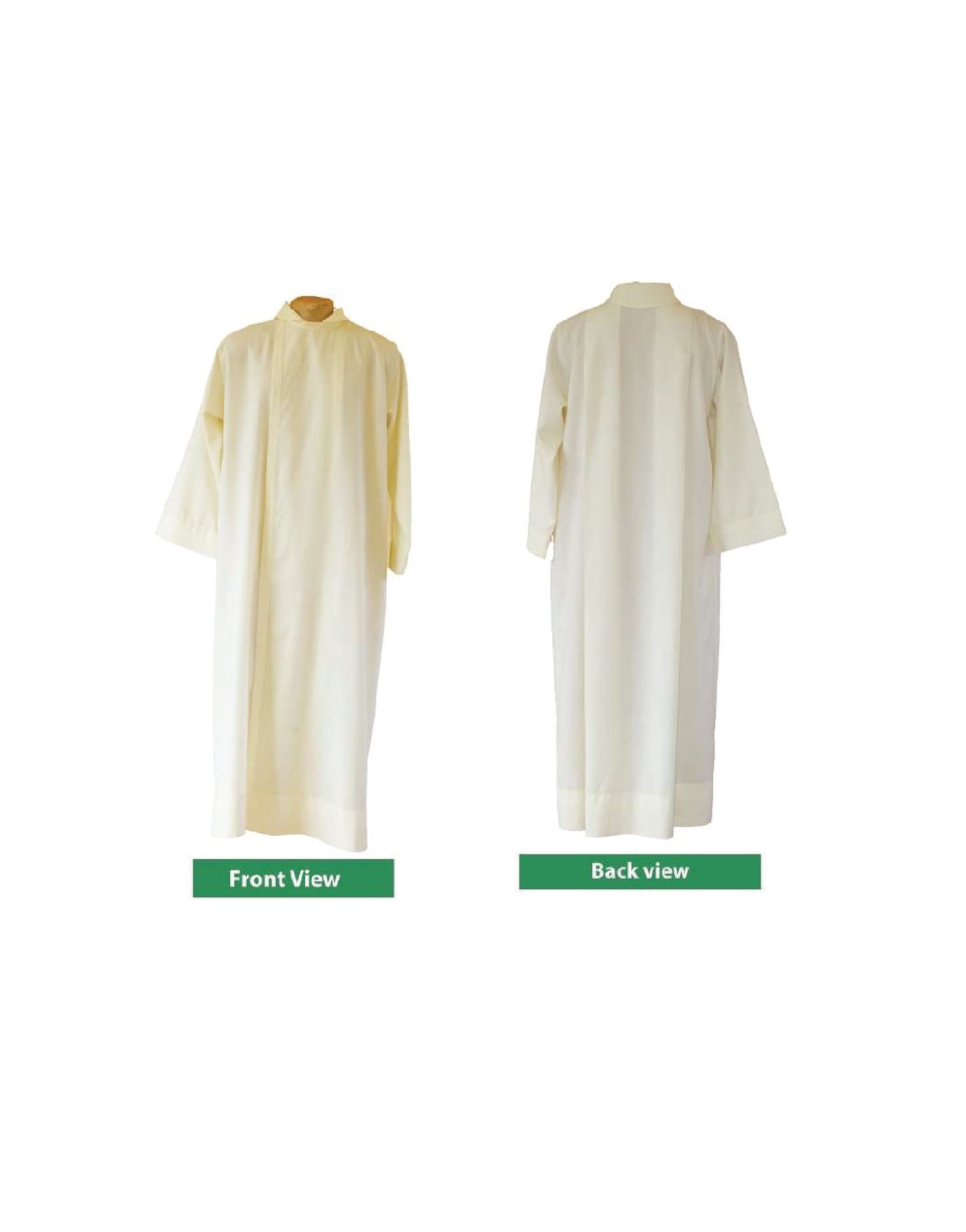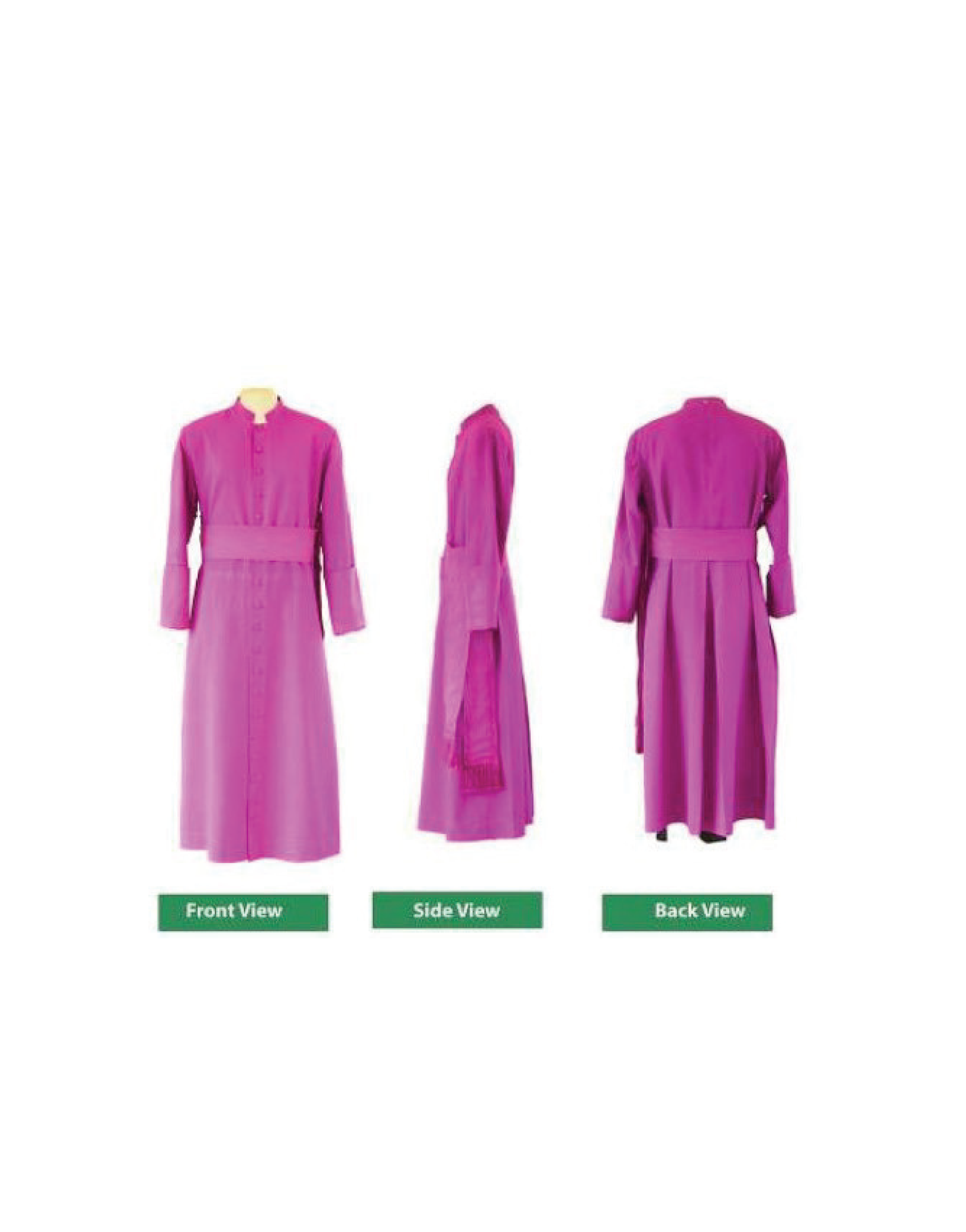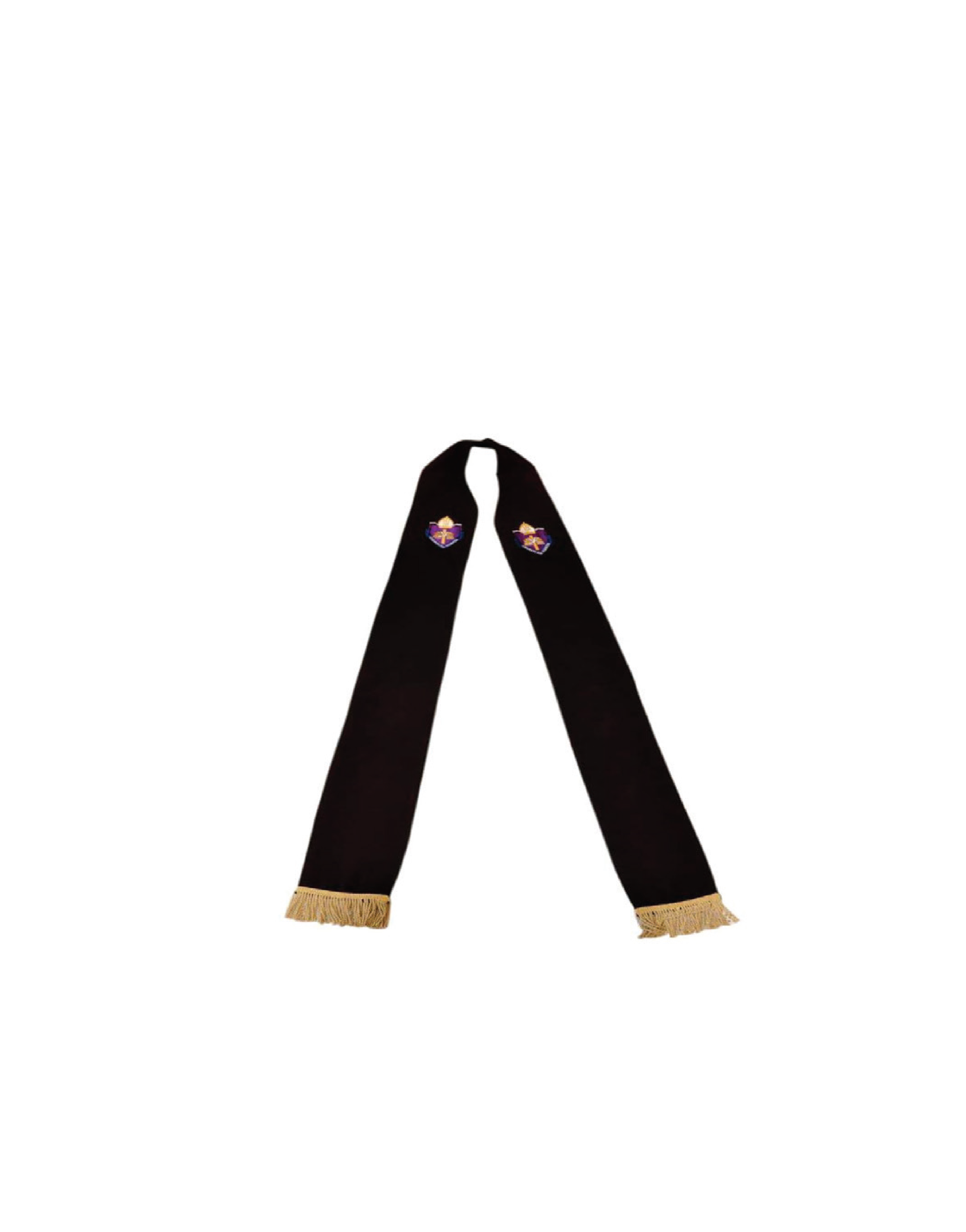About Church of Uganda
The Church of Uganda is a Jesus-loving, Bible-believing, Spirit-filled Anglican Church engaged in the mission of Jesus Christ in today’s world. There are over 13 million members and the church is organized in 39 dioceses to serve each region of the country. Learn more about each Diocese as well as our history, vision, mission, and the various Provincial Departments.
history of the church of Uganda
ORIGINS
Uganda is a spiritually rich country. Henry Stanley, British explorer and journalist, met King Mutesa, the Kabaka (king) of Buganda (a central Ugandan tribe) in April 1875. After sharing the simple story of Christianity with King Mutesa, he became very enthusiastic about Christianity and asked Stanley to write a letter to Queen Victoria of England, appealing for missionaries. The letter was published in The Daily Telegraph newspaper in England on 15th November 1875.
met King Mutesa, the Kabaka (king) of Buganda (a central Ugandan tribe) in April 1875. After sharing the simple story of Christianity with King Mutesa, he became very enthusiastic about Christianity and asked Stanley to write a letter to Queen Victoria of England, appealing for missionaries. The letter was published in The Daily Telegraph newspaper in England on 15th November 1875.
“Oh! That some pious, practical missionary would come here! What a field and harvest ripe for the sickle of civilisation….It is the practical Christian tutor who can teach people how to become Christians, cure their diseases, construct dwellings…and turn his hand to anything – like a sailor – this is the man who is wanted….You need not fear to spend money on such…a mission…”[1]
So, two years later, Christianity first came to Uganda when eight missionaries from the Church Missionary Society arrived in 1877. The Christian faith was originally preached only to the immediate members of the court of King Mutesa, Kabaka (king) of Buganda.
EARLY MARTYRS
 King Mutesa’s successor, King Mwanga, “became increasingly angry as he realized that the first converts put loyalty to Christ above the traditional loyalty to the king. Martyrdoms began in 1885. Mwanga first forbade anyone to go near a Christian mission on pain of death, but finding himself unable to cool the ardour of the converts, resolved to wipe out Christianity.” [2]
King Mutesa’s successor, King Mwanga, “became increasingly angry as he realized that the first converts put loyalty to Christ above the traditional loyalty to the king. Martyrdoms began in 1885. Mwanga first forbade anyone to go near a Christian mission on pain of death, but finding himself unable to cool the ardour of the converts, resolved to wipe out Christianity.” [2]
Among the early martyrs of Uganda was English Bishop, James Hannington, the first Anglican Bishop of the Eastern Equatorial province. Bishop Hannington approached the Buganda Kingdom from the East. Unfortunately, unknown to him, there was a Baganda belief that its enemies would approach the kingdom from the eastern route. So, the Kabaka (king) sent warriors to meet this encroaching enemy. Before they killed Hannington on 29th October 1885, he is reported to have said, “Tell the Kabaka (king) that I die for Uganda.” These words are inscribed on his tomb at the Namirembe Cathedral.
On 3rd June 1886, King Mwanga ordered the killing of twenty-six of his pages – thirteen Anglicans and twelve Roman Catholics. Today, 3rd June is set aside as a public holiday to commemorate the Martyrs of Uganda. Thousands of people from all over East Africa travel to the site of the martyrdom to remember their courage, sacrifice, and testimony…even unto death.
These early Christians were martyred at Namugongo. Their martyrdom produced a  result entirely opposite of Mwanga’s intentions. The example of these martyrs, who walked to their deaths singing hymns and praying for their enemies, so inspired many of the bystanders that they began to seek instruction from the remaining Christians. Within a few years the original handful of converts had multiplied many times and spread far beyond the court. The martyrs had left the indelible impression that Christianity was truly African, not simply a white man’s religion. Most of the missionary work was carried out by Africans rather that by white missionaries, and Christianity spread steadily. Uganda now has the largest percentage of professed Christians of any nation in Africa.[3]
result entirely opposite of Mwanga’s intentions. The example of these martyrs, who walked to their deaths singing hymns and praying for their enemies, so inspired many of the bystanders that they began to seek instruction from the remaining Christians. Within a few years the original handful of converts had multiplied many times and spread far beyond the court. The martyrs had left the indelible impression that Christianity was truly African, not simply a white man’s religion. Most of the missionary work was carried out by Africans rather that by white missionaries, and Christianity spread steadily. Uganda now has the largest percentage of professed Christians of any nation in Africa.[3]
REVIVAL
In June 1936 the East African Revival began in northeast Rwanda. (Rwanda borders Uganda on the southwest.) It spread rapidly through Burundi, Uganda, Zaire, Tanzania and Kenya. It touched mission schools, churches and villages. The Revival produced deep repentance and changed lives and has continued to be sustained, even through today. It helped to establish a new zeal for enthusiastic holiness in African Christianity. It confronted demonic strongholds, and began to prepare churches to cope with the horrors of massacres and warfare that erupted in later years.
LATER MARTYRS
 Renewed persecution of Christians broke out again in the 1970’s by the military dictator, Idi Amin, who had Islamic sympathies. The Christian resilience in the face of brutal torture and death demonstrated the continued influence of the Namugongo martyrs and the deep, vital, and abiding faith among so many who had been influenced by the East African Revival. Among the thousands of new martyrs, both Anglican and Roman Catholic, was Janani Luwum, Archbishop of the (Anglican) Church of Uganda.
Renewed persecution of Christians broke out again in the 1970’s by the military dictator, Idi Amin, who had Islamic sympathies. The Christian resilience in the face of brutal torture and death demonstrated the continued influence of the Namugongo martyrs and the deep, vital, and abiding faith among so many who had been influenced by the East African Revival. Among the thousands of new martyrs, both Anglican and Roman Catholic, was Janani Luwum, Archbishop of the (Anglican) Church of Uganda.
Today, 36% of Ugandans are Anglicans, and 56% are eighteen years old and younger.
MISSION-MINDED
The Church of Uganda, with its rich and firm spiritual history, has offered and continues to offer a dynamic and vital faith to peoples around the world. Already, this is a part of Anglican history in Uganda. In 1893 Canon Apollo Kivebulaya was the first to take the Gospel to the people of Eastern Congo. Ugandans such as William and Sala Nagenda, Erica Sabiiti, Festo Kivengere, Janani Luwum, John Wilson, Misaeri Kauma, Edward Muhima, and Henry Luke Orombi have witnessed before world leaders. In 1996, John Sentamu, a Ugandan Anglican, was consecrated a Bishop in the Church of England, first as the Bishop of Birmingham, and later as the Archbishop of York.
[1] Segawa, Henry (Rev. Canon). Namugongo Martyrs. Kampala, Uganda: Fountain Supplies, n.d., p. 2.
[2] Kiefer, James. Lesser Feasts and Fasts Biographies; available from http://elvis.rowan.edu/~kilroy/JEK/06/03.html.
[3] Kiefer, James. Lesser Feasts and Fasts Biographies; available from http://elvis.rowan.edu/~kilroy/JEK/06/03.html.
vision
The Vision of the Church of Uganda is a faster-growing, sustainable, Christ Centred Church.
mission
The Mission is to proclaim the Gospel in accordance with Christ’s commission to make disciples of all nations.
COU - Organisation structure
Apostles' CREED
I believe in God,
the Father almighty,
Creator of heaven and earth,
and in Jesus Christ, his only Son, our Lord,
who was conceived by the Holy Spirit,
born of the Virgin Mary,
suffered under Pontius Pilate,
was crucified, died and was buried;
he descended into hell;
on the third day he rose again from the dead;
he ascended into heaven,
and is seated at the right hand of God the Father almighty;
from there he will come to judge the living and the dead.
I believe in the Holy Spirit,
the holy catholic Church,
the communion of saints,
the forgiveness of sins,
the resurrection of the body,
and life everlasting.
Amen.
core values
Godliness
Faithfulness to the Holy Scriptures
Upholding Biblical family values
Integrity
Selfless service
Unconditional love
Unity in Christ

Words of Hope Radio Ministry was established in 2006 as a partnership involving the Church of Uganda, Uganda Christian University and Words of Hope. The station produces and broadcasts the Good News of Jesus Christ in the languages of Luganda, English, and Luo.

Uganda Joint Christian Council (UJCC) was established after Uganda’s independence in 1962 and is comprised of The Church of Uganda, The Roman Catholic Church and the Uganda Orthodox Church, which together constitute about 78% of Uganda’s population. The UJCC promotes understanding and unity, encourages Christian witness and harmony, and promotes action in areas of common interest such as economic development.

Uganda Bible Society serves churches and the general public by making the Holy Scriptures available in languages that people understand best.

Scripture Union nurtures children and youth and helps people engage with the Bible so that they may follow Christ and be instrumental in transforming Africa.

Rooted in Jesus is a practical and interactive Christian discipleship course written for ordinary African Christians. The Church of Uganda encourages use of the Rooted in Jesus curriculum to help members of local churches grow in their faith.

Navigators Uganda partners with the Church of Uganda to help members study the Bible, develop their prayer life, and memorize and apply God’s word in their lives. Their local chapter is based at All Saints’ Cathedral, Kampala (+256 414 342 128).

SOMA USA coordinates short term missions to engage, train, and equip leaders to minister through the transforming grace of the Holy Spirit.
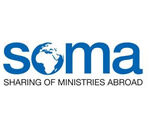
SOMA UK works for the transformation of individuals and churches and the healing of communities and their lands through the renewing power of the Holy Spirit with prayer and and short term mission.

Inter-Religious Council of Uganda (IRCU) brings together different religious institutions to promote peace and address issues of common interest such as: national reconciliation, human rights, care of orphans and vulnerable children, HIV Prevention and more.
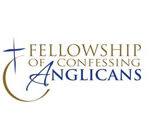
Global Fellowship of Confessing Anglicans is a world-wide movement of provinces, dioceses, churches, organisations and individual Christians whose goal is to help reform, heal and revitalise the Anglican Communion and expand its mission to the world.

Community Bible Study International provides Bible study training and materials to believers of all ages and walks of life. CBSI has partnered with the Church of Uganda in translation, training, and in developing local bible study materials.

Church Mission Society Ireland is a Christian Mission organisation that helps God’s people engage in God’s mission. CMS Ireland has a long history of work with the Church of Uganda and is currently involved in Luwero and Madi-West Nile Dioceses.
